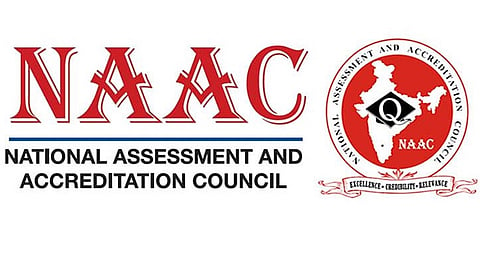New NAAC accreditation system to focus on AI-driven assessment online verification rollout in August
New Delhi: The National Assessment and Accreditation Council (NAAC) will launch a new accreditation system in August for higher education institutions, replacing physical inspections with AI-driven assessment and online document verification.The NAAC aims to accredit over 90 per cent of higher education institutions across the country within the next five years through the new framework, said the NAAC Chairman, Prof Anil Sahasrabudhe, in an interaction with ANI.The framework will comprise a basic accreditation system and a more advanced maturity-based graded-level accreditation. The new system will replace an existing eight-point grading structure."The earlier model had nearly 90 parameters, 70 per cent of which were verified through document-based evidence and 30 per cent through peer team visits. But peer visits led to complications and integrity concerns. That's why, in the new system, there will be no physical visits for basic accreditation. Instead, the process will rely on verified documents," he said.The reform measures are based on recommendations submitted by a committee led by former ISRO chief K Radhakrishnan, constituted by the Education Ministry in November 2022 to overhaul the accreditation ecosystem. Under the current system, only around 40 per cent of India's universities and 18 per cent of colleges are accredited.
Through the new system, the NAAC, an autonomous body which assesses and accredits higher education institutions (HEIs), aims to cover the majority of higher education institutions and address integrity concerns.A key innovation in the upcoming model is the use of artificial intelligence that eliminates the need for peer review visits and instead relies on crowdsourced validation from a wide pool of stakeholders.The basic system will classify institutions simply as "accredited" or "not accredited". Institutions will be assessed on 55 parameters for universities, 50 for autonomous colleges, and 40 for affiliated colleges. Those scoring below the threshold--50 per cent for universities, 45 per cent for autonomous colleges, and 40 per cent for affiliated ones--will not be accredited.Following receiving accreditation under the basic structure, institutions will be eligible to enter the maturity-based graded level accreditation, which will have five levels (Level 1 to 5).Institutions already accredited under previous systems--such as those with NAAC grades A, A+, or A++-- will be allowed to apply for maturity-based graded level accreditation directly.In a maturity-based system, the number and complexity of parameters will increase with each level, reflecting the institution's maturity and aspirations."For example, a university that clears the basic benchmark with 55 parameters might need to meet about 80 to 100 parameters to be eligible for higher levels. The exact parameters for each level in the maturity-based system are being fine-tuned," the Chairman said. "We want institutions to voluntarily opt in and raise the bar."
Physical visits are likely to be introduced only at Levels 3, 4, and 5, and even then, they will be conducted in hybrid mode--partly online, partly on-site--to retain checks and balances while limiting the chances of manipulation.Explaining the new methodology, the NAAC Chairman said that the system will use machine learning to scan institutional data and cross-verify it through a randomly selected panel drawn from a large database of stakeholders, including faculty members, retired vice-chancellors, industry experts, NGOs and administrative officers."Based on the documents submitted by institutions and their claims, a set of questions will be generated and randomly sent to about 100 people from the stakeholder pool. These experts will assess the authenticity of the data. Their inputs will help us calculate a credibility score for the institution on a scale from 0 to 1," the Chairman said.Institutions will start with a default credibility score of 0.5. The score will rise if the experts validate the submitted documents, or fall if inconsistencies or forgeries are detected.The credibility of the assessors themselves will also be monitored through AI."This is our indigenous method of stakeholder validation. We believe in trust, but with verification. If an institution submits fake documents, its score will fall. Institutions found guilty may be barred from accreditation for up to three years," he said.The new system also integrates key features of the National Education Policy (NEP), such as support for innovation, multilingualism, multiple entry-exit, sustainability, and internationalisation. Foreign universities setting up campuses in India will also be eligible to apply under this framework.
.png)


